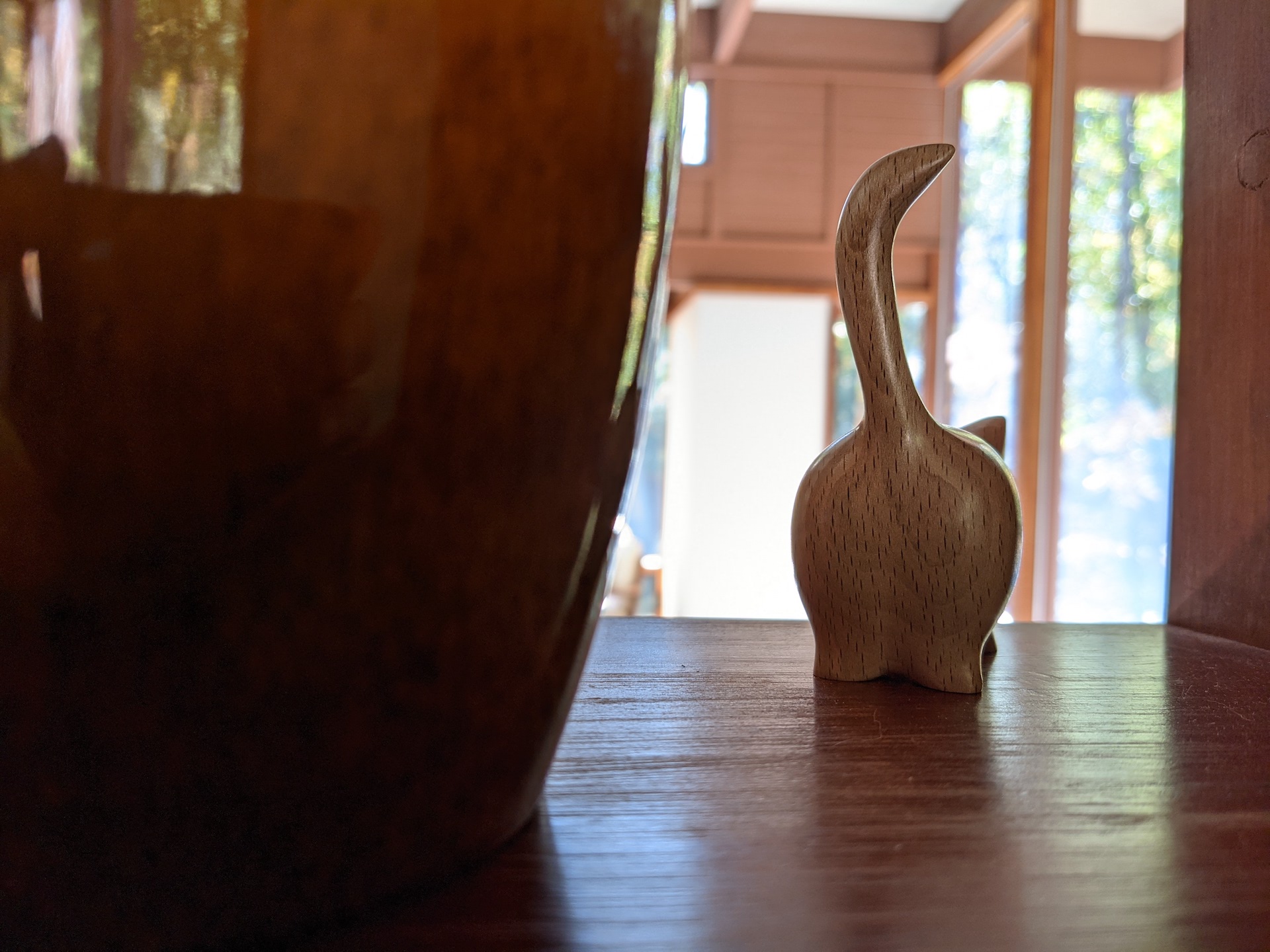Google Pixel 4a 5G Review - Sleight Of Hand
- Affordably priced
- Excellent camera performance
- Android has some truly useful features
- Great battery life
- You pay more for faster 5G
- No waterproofing or wireless charging
- Plastic design is unremarkable
There's a thing magicians do called misdirection, where they catch your eye with one thing while something more important happens elsewhere. Whether modern smartphones count as magic is probably a little too philosophical for here, but I certainly got the misdirection feeling from the Pixel 4a 5G. The headline feature, its 5G connectivity, is right there in the name, but I'm not sure anybody should buy one simply for its potential for higher-speed data.
Even Google seems to agree on that front, given the confusing fact that there are two versions of the phone. The regular Pixel 4a 5G is $499, and includes support for Sub-6 GHz 5G. If you want compatibility with mmWave, for Verizon's Ultra Wideband network – faster than other 5G, but a whole lot harder to find – then you need the Pixel 4a 5G UW.

That carries a $100 premium, and comes in at $599. In contrast, the Pixel 5 is simply the Pixel 5, and you get both Sub-6 and mmWave support regardless. It's also just $100 more than the Pixel 4a 5G UW.
Confused yet? Quite honestly the best advice I could give you is to ignore the 5G part altogether. The Pixel 4a 5G's real value doesn't get a mention in the name, but the bigger display, dual cameras, and faster processor are welcome improvements over the Pixel 4a.
With its 6.2-inch OLED panel the Pixel 4a 5G actually has the biggest screen of Google's 2020 line-up. If it doesn't actually feel all that large in practice, that's only because we're so used to even more massive phones. Day to day the size is a delight, even if the 1080 x 2340 resolution is no greater than that of its siblings.
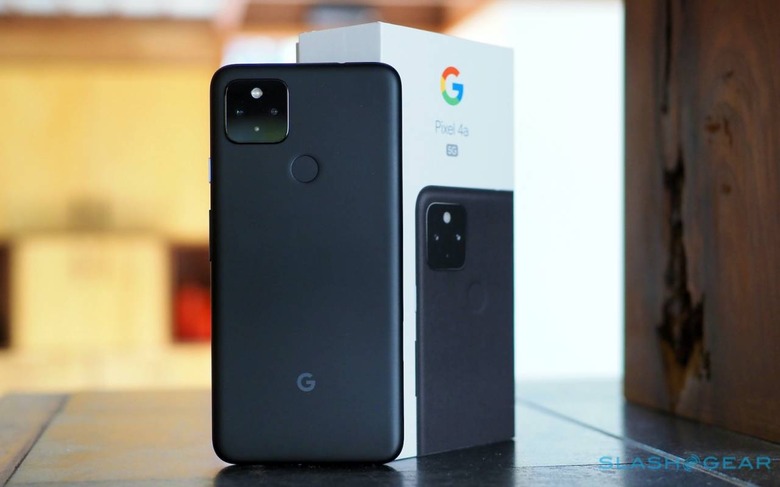
That does mean it has the lowest pixel density – 413 ppi – and it's a 60 Hz panel rather than the 90 Hz of the Pixel 5. You notice the former with a little extra fuzziness around smaller text, and the latter during high-speed scrolling, but I think they're acceptable compromises. Colors are bright and outdoor visibility is just fine, which I'd say are more important factors.
The rest of the phone is the epitome of surreptitious, the Pixel 4a only slightly enlarged. Google's polycarbonate plastic body has a pleasant soft-touch finish neither too slippery nor too grippy, but the Just Black color isn't going to turn any heads. The power button is the only bright spot, and even then it's muted; I found myself longing for the soft Sorta Sage of the Pixel 5. Try not to drop the phone, either, since Google only budgeted for aging Gorilla Class 3 screen protection, or get it wet since there's no IP68 dust or water resistance.
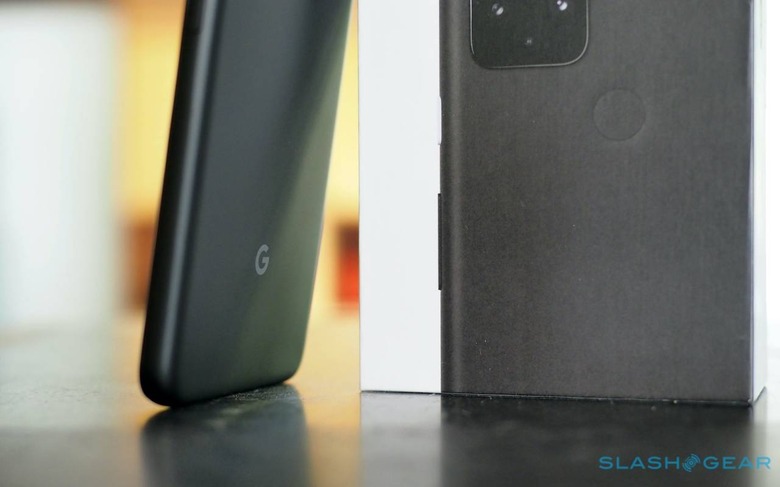
Like the Pixel 5, you get Qualcomm's Snapdragon 765G chipset and 128GB of non-expandable storage. However the Pixel 4a 5G pairs it with 6GB of RAM, 2GB less than in the more expensive phone. That's not the only sacrifice you'll make, either. The chassis may be larger but the battery is smaller – 3,885 mAh on average, Google says, versus 4,080 mAh – and there's no Qi wireless charging, only 18W fast charging via USB-C.
A fingerprint sensor is on the rear, nestled in a slight divot, and it's admirably fast. Having to wear a mask so often has taken much of the shine off face recognition biometrics, so the ability to rapidly unlock the Pixel 4a 5G without a PIN or passcode has been a welcome change. There's a 3.5mm headphone jack, too, which is positively unusual these days. The downside is that Google uses two, not three microphones, and callers told me there was more background noise as a result. I'm not too impressed by the Pixel 4a 5G's speakers either, which are lacking in bass and sound a little unbalanced.
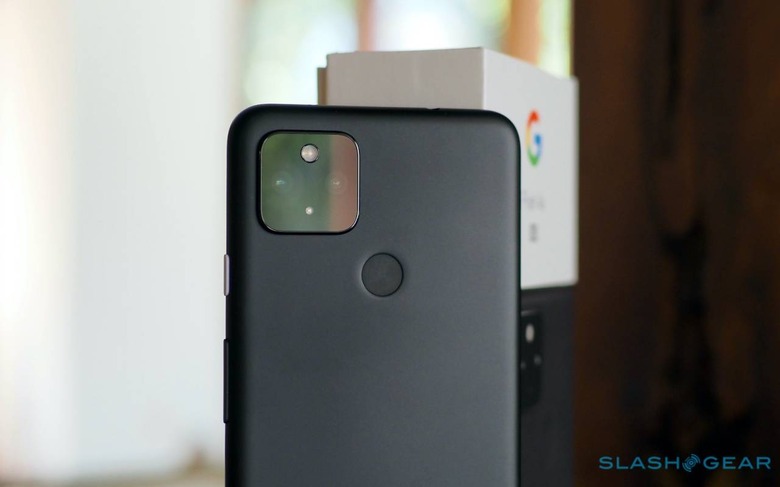
The same can't be said for the cameras. Google's computational photography has long been a primary draw for its phones, and this midrange Pixel is no exception. You get the same dual rear cameras as on a Pixel 5, a familiar 12.2-megapixel primary sensor with dual-pixel phase detection AF and OIS, and a new 16-megapixel ultra-wide with a 107-degree field of view that's markedly crisper at the corners than its counterpart on many rival phones. The Pixel 4a 5G can shoot 4K at up to 60fps or 1080p at up to 240fps, and there's an 8-megapixel fixed-focus front camera for selfies.
With identical camera hardware and software, everything I said about the Pixel 5 holds true for the Pixel 4a 5G. Expect clean, crisp, balanced, and natural-looking shots, which don't tip over into common faults like over-saturation or excesses of grain. Night Sight activates automatically now rather than needing to be manually enabled, and it'll also work with Portrait mode for improved low-light shots with faux-bokeh. You can still turn it off if you'd rather not have the light gain, however.
Google Photos' new editing tools are present and correct here, too, including Portrait Light which allows you to tweak the lighting of images with depth data. Portrait shots still, inevitably, work better with people than pets. On the video side, while I still prefer footage from the iPhone 11 Pro, Google's new cinematic stabilization modes are interesting, and likely to start showing up on your Instagram feed soon enough.
Personally, I prefer a telephoto to an ultra-wide, but that's just a matter of taste. I can't see most people being disappointed with the Pixel 4a 5G's photographic talents, and quite honestly they punch above what just about anything else in the price segment can offer. Of course, with so much of that being dependent on software cleverness that Google plans to roll back to many earlier Pixel devices, whether it's reason to upgrade is a legitimate question.

The same holds true for 5G. Yes, if you have 5G coverage, it can be faster than 4G LTE. That's not a given – at least not when it comes to Sub-6, however – and though mmWave networks are legitimately speedy, they're also in vanishingly small supply. You could own the Verizon-spec Pixel 4a 5G UW for the next year, even two, and never find yourself with Ultra Wideband service.
The presence of WiFi 5 rather than WiFi 6 that I found so bemusing on the Pixel 5, I can more readily forgive on a cheaper device. There's Bluetooth 5.0 and NFC, too. I had no problem getting through a full day of use on a charge, though the 18W charger seems a little slow compared to the 25W+ we're commonly seeing elsewhere.
What those other phones don't have is pure Android. Out of the box, you get Android 11 just as Google intended it, and there's the promise of at least three years of OS and security updates. Optimized for the midrange Snapdragon inside, I have zero complaints about overall performance. Sure, there's a couple of seconds of lag as the Pixel 4a 5G processes some heavy-duty images, like Portrait Night Sight shots, but I think that's acceptable.
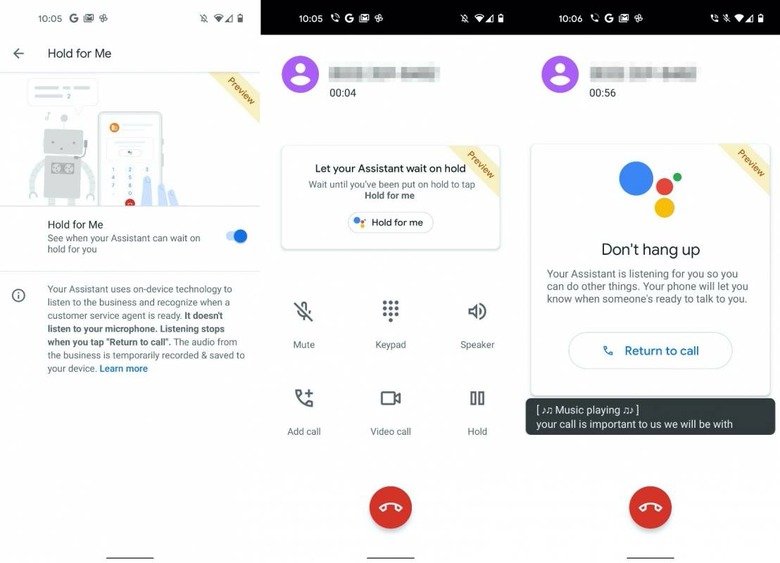
Owners get the first taste of new features like Hold for Me, which promises to endure the "your call is important to us" and interminable music of being put on hold, the Assistant notifying you when there's a real human on the line. Recorder, too, has been upgraded, with the ability to jump between keywords the Assistant believes are important, edit out sections, and even export as a video clip with transcription and audio.
It's all clever, but it won't be unique to the Pixel 4a 5G, not forever at least. Owners may get those features first, but Google is rolling them out to other Android users too. If you're a Pixel 4a owner, for instance, a little patience is all it takes.
Pixel 4a 5G Verdict
The Pixel 4a 5G feels a little like a phone Google made for the carriers, not for consumers. Sandwiched in-between the Pixel 4a and the Pixel 5, it can't match the aggressive pricing of the former nor the feature niceties of the latter. If you're a network looking for that all-important "5G" on the spec sheet then that's probably still enough, but it leaves the rest of us with a tougher decision.
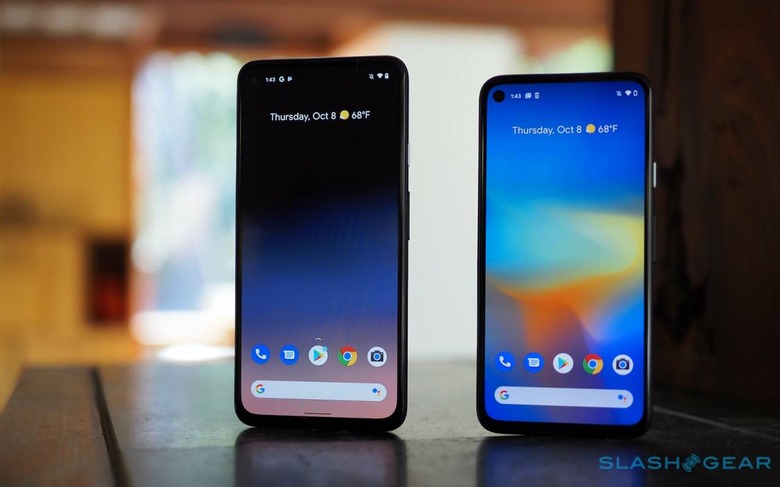
Battery life and camera performance are great, but then again so they are on the Pixel 4a, and that's in line to get the new camera features too. The faster chipset does make the Pixel 4a 5G a little swifter in everyday use, but I don't know if most people would notice that without them side by side. The Pixel 4a is a bonafide bargain, and unless you truly need a bigger screen and that ultra-wide camera, this 5G version doesn't really change that fact.
As for the 5G, if your goal is future-proofing then you probably want the mmWave version, and by that point you're $100 away from the Pixel 5. That has a better display, wireless charging, and a bigger battery. In short, while Google's tweener phone is good, I'm not sure the Pixel 4a 5G does enough to stand out from the great phones that sandwich it.

